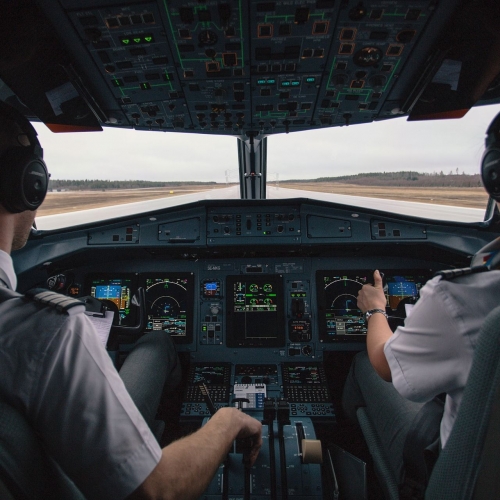
by Keith Tonkin (Managing Director of Aviation Projects)
Pilot shortage in Australia – Fact or Fiction?
Is there a pilot shortage in Australia? Well, that depends on who you ask.
The big commercial carriers and smaller regional airlines certainly seem to think so.
From Qantas and Virgin to Air North and Regional Express (REX), the major airlines and smaller regional carriers have been cutting back flights to metropolitan routes and regional centres alike, citing the scarcity of pilots.
A worldwide shortage of pilots has seen Australian pilots depart for better pay overseas as the large international carriers compete for their expertise.
As the major airlines are squeezed for talent they are raiding the smaller regional airlines for pilots, many of whom are jumping at the opportunity to fly jet airliners.
This in turn is exacerbating pilot shortages for regional airlines and general aviation operators.
Air North and Regional Express (REX) are losing pilots to Qantas and Virgin and both have been forced to make difficult decisions about prioritising some routes or services over others.
Even the Royal Flying Doctors claim they are finding it hard to hire pilots and have dozens of vacancies nationwide.
What impact will the pilot shortage have on Australia?
We’re already seeing cuts to regional aviation services. But the aviation industry goes beyond scheduled passenger airline services.
General aviation is the lifeblood of regional and remote communities around Australia.
General aviation covers all flying outside of the military and commercial airlines, and often goes where the commercial airlines don’t have scheduled services.
It covers is all civilian flying, often going where the commercial airlines don’t have scheduled services. It can be flying for business or personal travel, mail and freight services, tourism related operations such as transfers or sightseeing flights, medical evacuations, as well flying for agriculture and mining.
Ultimately it will be the regional centres that rely on general aviation and the range of services it provides to support the health of communities that will suffer the most.
What can the industry do to alleviate the pilot shortage?
According to Qantas and the Regional Aviation Association Australia (RAAA) the solution is to bring in more foreign pilots to make up the shortfall.
They are lobbying the Australian Government to extend temporary skilled worker visas to overseas pilots from two years to four years in order to attract more foreign flyers Down Under.
In late December 2017, the Australian Government added pilots back onto the list of applicable occupations for its temporary skilled worker visas, which replaced the former 457 visa scheme in April 2017.
But the new two-year visas can only be extended once for a further two years, and don’t allow families to join the foreign worker in Australia nor apply for permanent residency. The four-year visa however provides a path to residency after three years.
Qantas and RAA argue that extending four year rather that two year visas is the key to attracting more overseas pilots to Australia to address the shortfall.
Captain Murray Butt, President of the Australian and International Pilots Association disagrees, claiming that there are graduates and pilots working overseas could be tempted back to Australia by paying local pilots more.
However, given the incredibly tight operating margins facing Australia’s aviation industry, paying local pilots more to keep them flying here seem highly unlikely.
Pilot shortage? What pilot shortage?
There are those that take a different view, namely that Australia has never had - and still does not have - a shortage of suitably qualified commercial pilots.
According the Australian Federation of Air Pilots, while China and the USA might have a shortage of pilots, Australia does not. Rather we have an arbitrary requirements problem whereby our local airlines are limiting career opportunities by imposing arbitrary excess experience requirements on aspirants.
Australia is producing enough pilots and could fill its needs if it were to drop arbitrary flying hours requirements and accept applicants with the ICAO and CASA entry-level requirements of Commercial Pilot Licence (CPL) with Multi-engine Instrument Rating (IR MEA). AFAP makes a range of other suggestions which you can read here.
My position is that the pilot shortage is another result of the regulatory and cost burden that has been crippling general aviation.
General aviation has traditionally provided a pathway to airline training—it is where many pilots get their start in the industry. Any decline in the sector will increase Australia’s reliance on overseas trained pilots.
Finding solutions to Australia’s aviation regulatory framework to ensure the health of the general aviation sector is the long-term solution we need to pilot shortages, rather than the quick-fix of importing foreign flyers.
If only the industry, legislators and the regulators can get their act together, Australia will not only fulfil its own needs for pilots, but also meet what is a booming global demand.
I have spent nearly 30 years in the aviation industry, starting out as a pilot first in the military and then as an international and domestic airline pilot with Qantas.
Since then, I have applied my knowledge of flying and airport operations around Australia and the South Pacific as the Managing Director and Principal Consultant of Aviation Projects.
I have a deep understanding of the opportunities in Australia’s aviation sector and believe they will continue to flourish.
Call me today on +61 7 3371 0788 to talk about the diverse range of opportunities available in the industry.
Tags: Pilot, Aviation Consulting